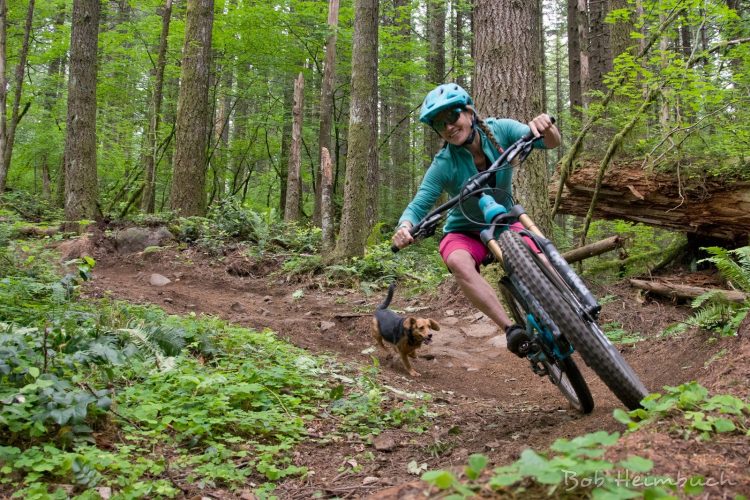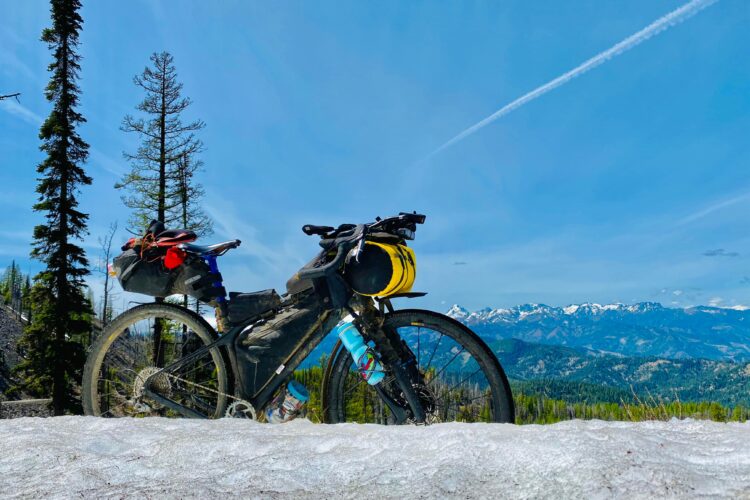
I promise there is a mountain bike story burrowed in this molehill. There’s even something like a happy ending.
In late autumn of 2016, my partner and I moved to Italy, with my daughter soon to follow after she and her mom shared some traveling time. In the months prior we had spent most evenings trying to decipher Italian immigration laws and documents, and submitting mountains of forms that would be assessed in Rome, hopefully allowing us to stay for a while. At some point, many months overdue, the permission was granted and we were good to go, which was lucky because my partner had already sold the house in northeast Portland, Oregon.
While multiple pillars bolstered this move, the main magnetic for me was the experience of living with a different culture. Before I knew what I might be if I grow up, I had a profound fascination with what life might look and feel like in another country, with its own words and kaleidoscope tumblers to see the world through. When Italian people ask me why I moved to Italy I reply “per la sfida,” which translates to “for the challenge.” I also moved here for the warm sunshine and the seemingly endless supply of natural singletrack, but the challenge that accompanies immigration and cultural awareness remains the stronger magnet.
Almost five years on, friends new and old now want to know what I miss most about living in the Pacific Northwest. Little hint: it’s absolutely and positively one-hundred-percent not the constant rain. My gut response is that I miss the supportive community of folks helping one another get through the hard times and throwing house parties for the best times. I’m working to piece that family together in my new home. I know I need a crew.
Ya see, my brain’s relationship with happiness and positivity is complicated in a way that the doctors say is pretty bad, and those friends saved my life more times than any of us know. I dearly miss them, and I’m grateful for their love. I also miss the long and windy trails that distracted my half-empty-always brain from its own messy grey matters. Some of those ribbons cauterized my insides and I think about them regularly. I often wonder if all mountain bikers have a trail or two that their mind will ride forever.
My closest friend, of the slender dirty variety, is looped over the eastern flank of Mount St. Helens like an epaulette of sacrifice. The “loop” consists of four distinct trail segments and a tiny patch of pavement that all weave along the volcanic blast zone, visually edifying hikers and mountain bikers alike. It appropriately begins on a long climb up Ape Canyon trail, passing between towering Western Red Cedars, Larch, Vine maple, Douglas fir, and other native tree species. Swinging in and out of the thick forest, the trail’s deepest left turns reveal an open landslide of stone and ash that was created by the 1980 eruption and subsequent landslides. There’s no spot along the trail that’s not worth a full day of appreciation. From the pillowy loam to the fungi and huckleberries that grow just above, it’s a rare piece of Narnia.
Atop the climb, an open-face ribbon named Plains of Abraham widens into moonscape expanses and a view of the remaining mountain. The few trees that were spared from vaporizing heat lean to tell where the mountain’s energy went that day in May. The trail starts and stops between a consistent stream of runoff braids, redefining their path to Smith Creek in the valley below. Eventually, the path levels across an ethereal escarpment of pumice pebbles that sing back beneath the tires. Acres of reflective grey and white stones make the trail glow under moonlight, and much of Plains of Abraham and the subsequent Windy Ridge Trail can be ridden at night; no batteries required.
Windy Ridge trail lives up to its name, and I’ve been blown off the crest a number of times. Fortunately, the deep pebble pile makes for a soft landing. Some friends call this brief chunk of trail “Wheelie Ridge” because it’s one of the coolest segments to stop and shoot photos of folks playing on their bikes. That vast alpine view, with Spirit lake lazy in the background, is framed on the walls of many PNW homes.
Over the first few years of pedaling around this loop, Spirit Lake was blanketed by floating logs that had hit the water before being fully incinerated, creating a surreal sense of rigidity to the deep pool. Many of those trees have reached their saturation point, gently exhaling downward as saplings spring up through the pumice. I’ve ridden the loop solo more times than I can count, and that waterlogged lake was an invaluable therapist.

Most of the elevation loss on this favorite ride occurs down the first mile of the Smith Creek trail. The old hiking path asks that riders use some different body English than they may be accustomed to, feeling both wheels tilted to drift and cut into the deep scree-based soil. On a particularly grumpy ride, my partner slid past me and exclaimed “be the scree.” I knew that she meant “ride loose like the rocks below” and her advice made the whole day and the rest of the trail feel better.
I now have “scree” tattooed on my left thigh as a reminder of that day, of supportive friends, and of the magic in adaptability.
A final flat segment of the loop meanders quietly past house-high Alder trees, crossing the stream to be found randomly along the opposite bank. I’ve always thought of this bit of trail like the meditation minutes that close a calm yoga or therapy session. While you can ride past it all fast, the thick moss is far too distracting to be in a hurry. The final right turn that will carry you back to the car is easy to miss given all the natural distractions. On a hot summer day, post-loop, my favorite move was to grab a flask of whiskey and some food from the car and coast several miles back to Smith Creek for a cool afternoon soak.
If I return, the loop on Mount St. Helens won’t look like the one I ride in my mind. The trail changes direction, color, and smell with storms and earth’s pass around the sun. Pieces wash away and others are rebuilt by random folks or the local trail association. The most striking thing about this ever-shifting mainstay is how it feels alive; consistently adapting to new challenges. The compass headings will largely remain the same, but the black bear and marmots, the paintbrush and huckleberries, the hunters, hikers, and bikers, the short grasses and tall winds will forever come through to give the loop its nuanced culture and lens.





















3 Comments
May 19, 2021
May 20, 2021
May 24, 2021